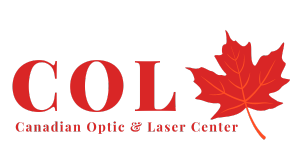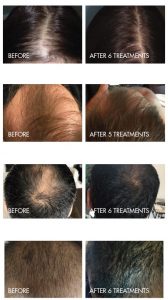Hair microneedling, also known as microneedle therapy or microneedle stimulation, is a non-invasive cosmetic technique for promoting hair growth and improving the overall health of the scalp. This innovative technique involves the use of a specialized device equipped with fine needles that create tiny punctures in the skin’s surface, stimulating the body’s natural healing response and encouraging the production of collagen and elastin.
Effects and Physiology:
Stimulation of Blood Flow:
- The microneedles create micro-injuries in the scalp, which triggers the body’s wound healing process. This leads to increased blood circulation to the hair follicles, delivering essential nutrients and oxygen, thereby promoting hair growth.
- Enhanced Absorption of Topical Treatments: The microchannels created by the microneedles allow for better absorption of topical hair growth products, such as minoxidil or growth factors, into the deeper layers of the scalp, maximizing their effectiveness.
During hair microneedling treatments, specific products are often used to enhance the efficacy of the procedure and facilitate better penetration into the scalp. These products typically include:
Growth Factor Serums:
Hyaluronic Acid: Hyaluronic acid serums are often used during microneedling treatments to hydrate the scalp and improve skin elasticity. By using hyaluronic acid topically and then microneedling over the treated area, the serum can penetrate more deeply into the skin, providing long-lasting hydration and promoting a healthy scalp condition for optimal hair growth.
Anti-Inflammatory and Healing Agents:
Aloe Vera Gel: Aloe vera has soothing and anti-inflammatory effects, making it an ideal product for use during microneedling treatments to calm the scalp and reduce any redness or irritation post-procedure. Applying aloe vera gel topically before microneedling can help minimize discomfort and promote faster healing of the skin.
Scalp Stimulating Solutions:
Essential Oils: Essential oils such as rosemary, peppermint, and lavender are often incorporated into microneedling treatments to stimulate blood circulation and advocate hair growth. These oils can be diluted and applied to the scalp before microneedling to improve the overall effectiveness of the procedure and encourage healthy hair follicle function.
By combining microneedling with these specialized products, practitioners can maximize the benefits of the treatment and optimize hair growth outcomes for their patients. The microneedling process creates microchannels in the scalp, allowing these products to penetrate more deeply into the skin and target the root cause of hair loss, resulting in thicker, fuller hair and a rejuvenated scalp.
Best Candidates and Effects for Men and Women:
Candidates: Hair microneedling is suitable for both men and women facing various types of hair loss, including androgenetic alopecia (male-pattern baldness and female-pattern hair loss), alopecia areata, and thinning hair. The effects of hair microneedling can vary from person to person, but many individuals report noticeable improvements in hair density, thickness, and overall scalp health over time. Results may be more noticeable with each successive session, with optimal results typically seen several months after completing a full treatment course.
Alopecia:
Hair microneedling has shown promising results in the treatment of alopecia, including alopecia areata, an autoimmune condition characterized by patchy hair loss. By stimulating blood flow and promoting the delivery of growth factors to the hair follicles, microneedling can help encourage hair regrowth in affected areas.
Hair microneedling is known as a safe and effective treatment for promoting hair growth and improving scalp health in individuals experiencing hair loss or thinning. With its ability to stimulate blood flow, enhance the absorption of topical treatments, and encourage collagen production, microneedling offers a promising solution for both men and women seeking to rejuvenate their hair and regain confidence in their appearance.
Sessions:
- Frequency: Hair microneedling is typically performed in a series of sessions, 8-12, spaced 2-3 weeks apart to allow for optimal results. The number of sessions required varies depending on individual needs and the severity of hair loss.
- Duration: Each session usually takes around 20 – 40 minutes to complete, depending on the size of the treated area and the specific protocol used by the practitioner.
Sensations and post-care:
- During Treatment: Patients may experience mild discomfort or a tingling sensation during the procedure, although numbing creams are often applied beforehand to minimize any discomfort.
- Post-Treatment: Following the procedure, some individuals may experience temporary redness, swelling, or minor irritation in the treated area. However, these side effects typically subside within a few hours to a few days. It’s essential to follow post-care instructions provided by the practitioner, which may include avoiding sun exposure and refraining from using harsh hair products immediately after treatment.
Side Effects:
While hair microneedling is generally safe and well-tolerated, some individuals may experience mild side effects such as temporary redness, swelling, or minor irritation at the treatment site. These effects typically subside within a few hours to a few days. In rare cases, more severe reactions such as infection or scarring may occur, particularly if proper hygiene and aftercare protocols are not followed. It’s essential to consult with a qualified practitioner and adhere to post-treatment instructions to minimize the risk of adverse reactions and ensure optimal results.
Hair microneedling works on the principle of stimulating the body’s natural healing response to promote hair growth and improve scalp health. During the procedure, fine needles create micro-injuries in the scalp, triggering the release of growth factors and cytokines that stimulate blood circulation and activate the hair follicles. This increased blood flow delivers essential nutrients and oxygen to the follicles, promoting cell proliferation and hair growth. Additionally, the micro-injuries created by the microneedles enhance the absorption of topical treatments, such as minoxidil or platelet-rich plasma (PRP), into the deeper layers of the scalp, maximizing their effectiveness. Over time, hair microneedling can lead to improvements in hair density, thickness, and overall scalp health, making it a promising option for individuals experiencing hair loss or thinning.
Maintenance Treatments:
After completing a series of initial microneedling treatments for hair growth, maintenance sessions may be recommended every few months, usually every 4 to 6 months, to sustain and enhance the results. These maintenance treatments help to stimulate ongoing hair growth, maintain scalp health, and extend the benefits achieved from the initial treatment course. The frequency of maintenance sessions may vary depending on individual reactions to treatment, hair growth goals, and the severity of hair loss. By incorporating regular maintenance microneedling sessions into a comprehensive hair care regimen, individuals can continue to enjoy the rejuvenating effects of microneedling and promote long-term hair health.
Laser therapy and microneedling:
Combining low-level laser therapy (LLLT) with hair microneedling enhances the efficacy of both treatments by synergistically targeting hair loss and promoting hair growth. LLLT involves the use of low-level lasers or light-emitting diodes to stimulate cellular activity and increase blood flow to the scalp, which can rejuvenate dormant hair follicles and prolong the hair growth cycle. When paired with microneedling, LLLT can penetrate more deeply into the scalp through the microchannels created by the microneedles, maximizing its therapeutic effects. This combination therapy not only stimulates hair follicles but also enhances the absorption of topical treatments, such as minoxidil or growth factors, into the scalp, further promoting hair regrowth and improving overall scalp health. By harnessing the complementary mechanisms of action of LLLT and microneedling, this combination approach offers a comprehensive solution for individuals seeking to combat hair loss and achieve thicker, fuller hair.
The benefits of LLLT for hair growth are numerous. Firstly, it promotes increased blood flow to the scalp, delivering vital nutrients and oxygen to the hair follicles, which can rejuvenate dormant follicles and prolong the hair growth cycle. Additionally, LLLT helps to reduce inflammation in the scalp, which is often associated with conditions like androgenetic alopecia and alopecia areata. Over time, patients may notice improvements in hair density, thickness, and overall scalp health. LLLT is a safe and effective treatment option for both men and women seeking to combat hair loss and achieve fuller, healthier hair.
Low-level laser therapy (LLLT) for hair growth is a non-invasive treatment that utilizes low-level lasers or light-emitting diodes to stimulate cellular activity in the scalp. These devices emit specific wavelengths of light that are absorbed by the hair follicles, leading to increased blood flow, improved nutrient delivery, and improved cellular metabolism. As a result, LLLT can prolong the anagen (growth) phase of the hair cycle, stimulate dormant follicles, and promote thicker, healthier hair growth. LLLT is a safe and effective option for both men and women experiencing various types of hair loss, including androgenetic alopecia and alopecia areata. Treatment sessions are normally painless and well-tolerated, and visible improvements in hair density and thickness can be observed with regular use over time.


